Презентація на тему «Moby Dick»
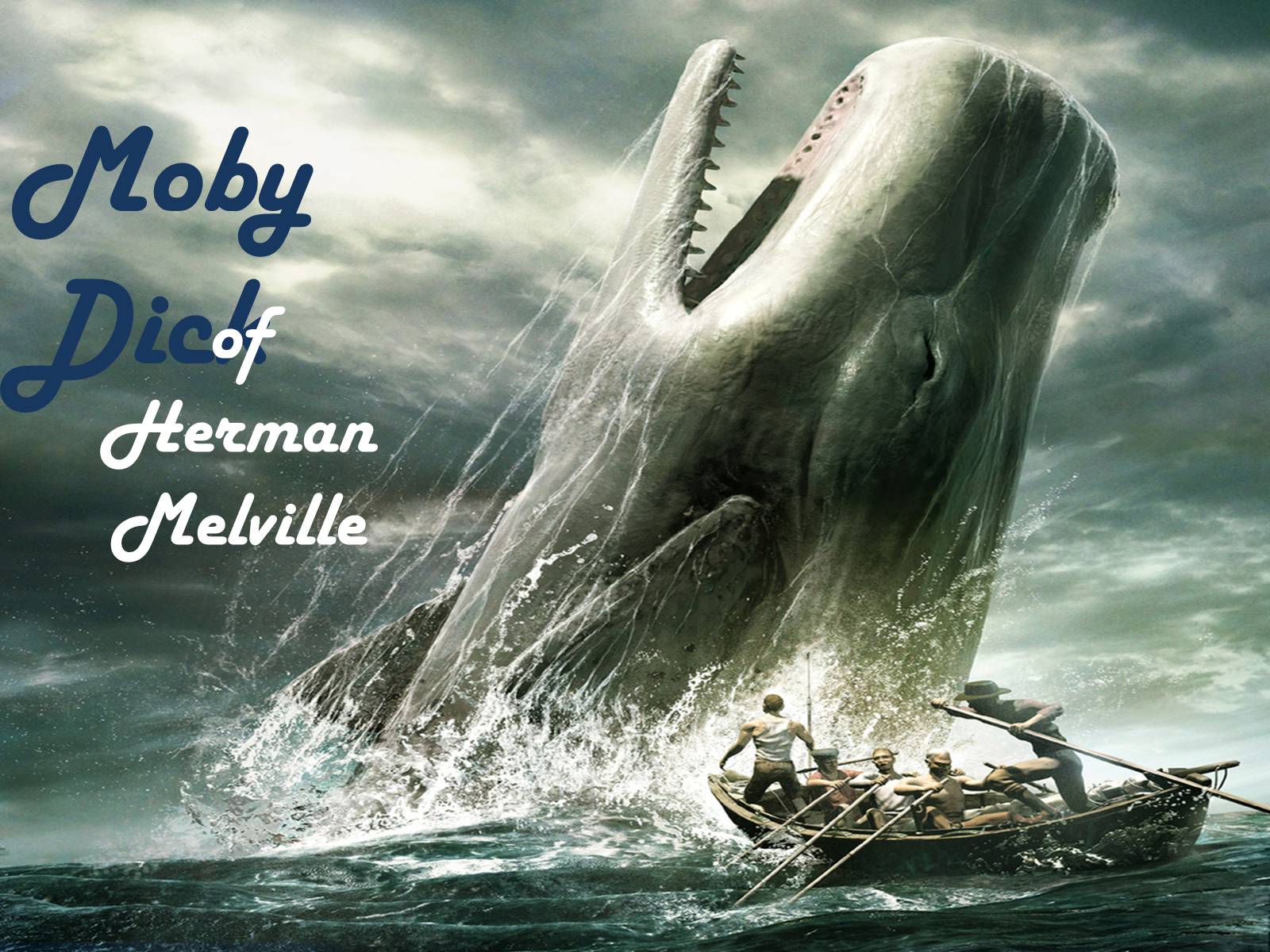
Moby Dick
of
Herman Melville
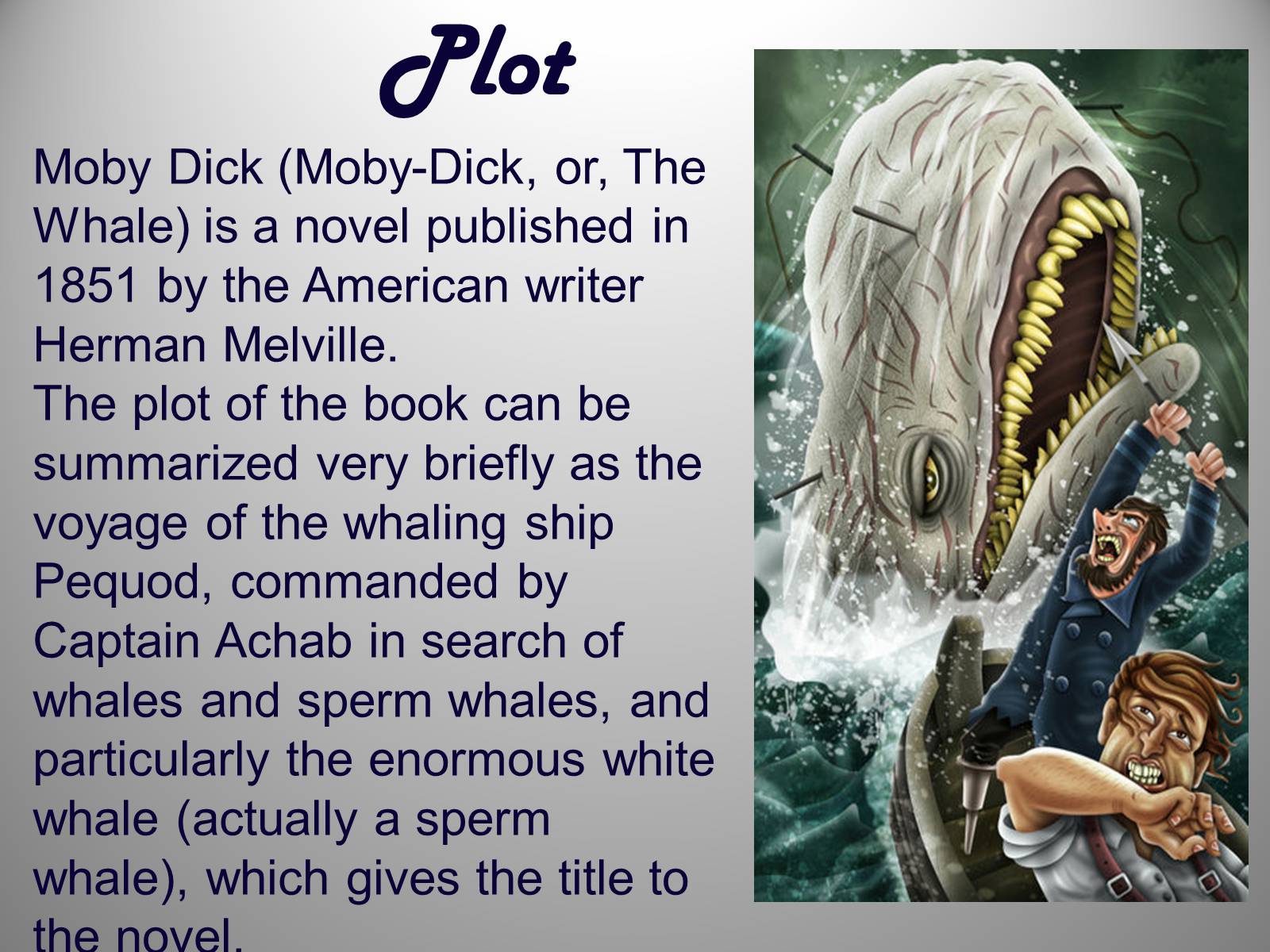
Moby Dick (Moby-Dick, or, The Whale) is a novel published in 1851 by the American writer Herman Melville.The plot of the book can be summarized very briefly as the voyage of the whaling ship Pequod, commanded by Captain Achab in search of whales and sperm whales, and particularly the enormous white whale (actually a sperm whale), which gives the title to the novel.
Plot
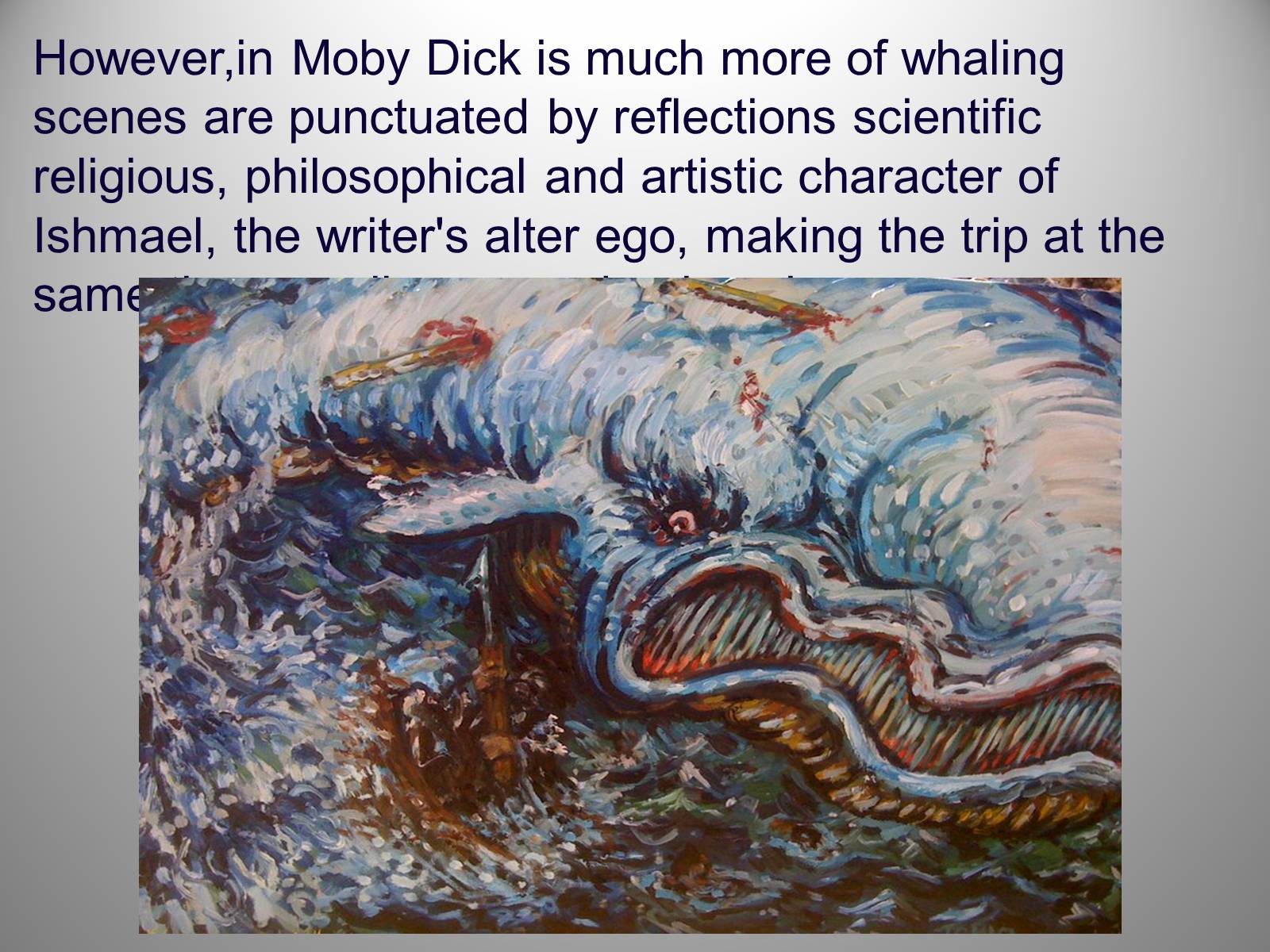
However,in Moby Dick is much more of whaling scenes are punctuated by reflections scientific religious, philosophical and artistic character of Ishmael, the writer's alter ego, making the trip at the same time an allegory and epic epic .
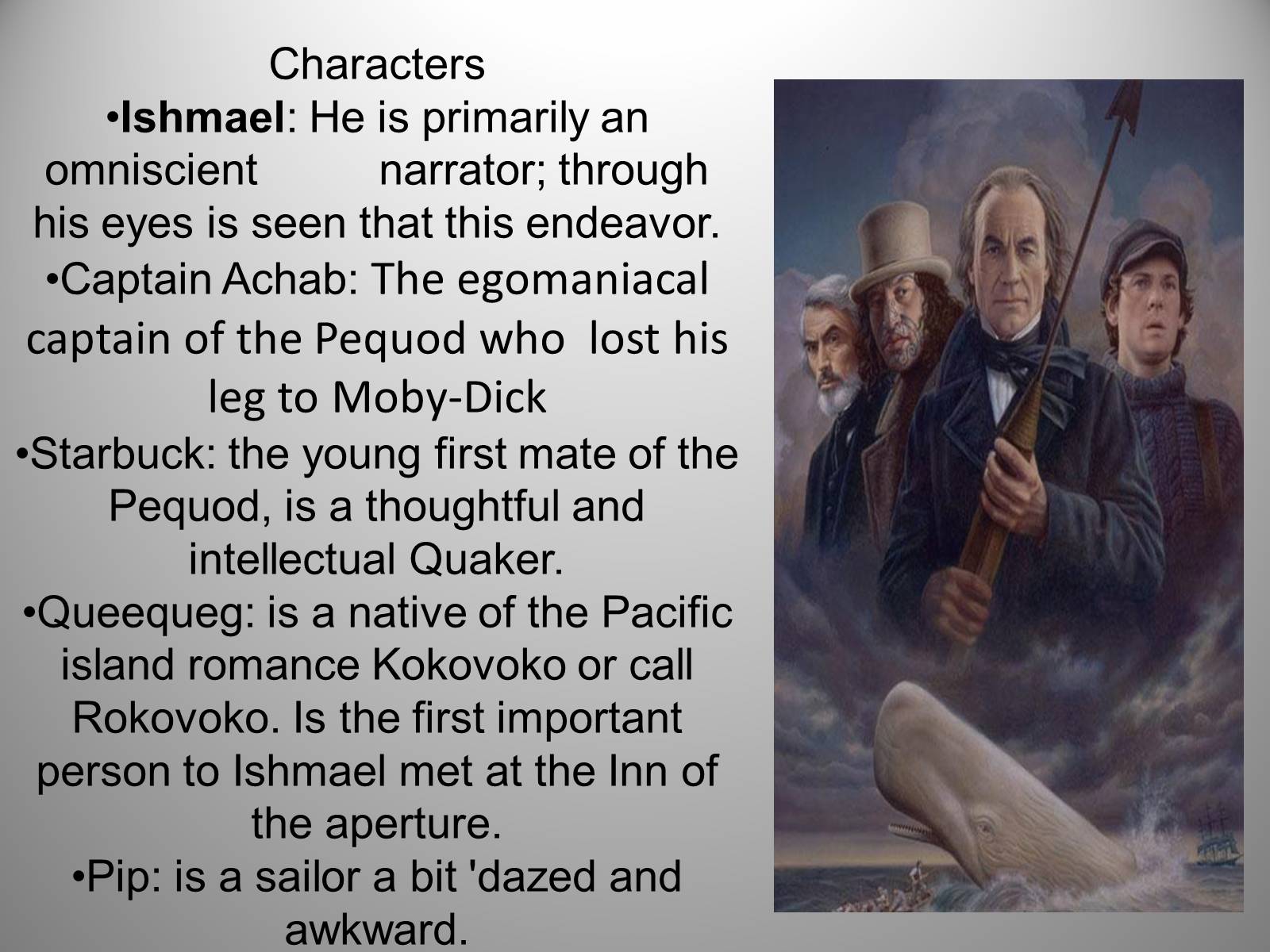
Characters
Ishmael: He is primarily an omniscient narrator; through his eyes is seen that this endeavor.
Captain Achab: The egomaniacal captain of the Pequod who lost his leg to Moby-Dick
Starbuck: the young first mate of the Pequod, is a thoughtful and intellectual Quaker.
Queequeg: is a native of the Pacific island romance Kokovoko or call Rokovoko. Is the first important person to Ishmael met at the Inn of the aperture.
Pip: is a sailor a bit 'dazed and awkward.
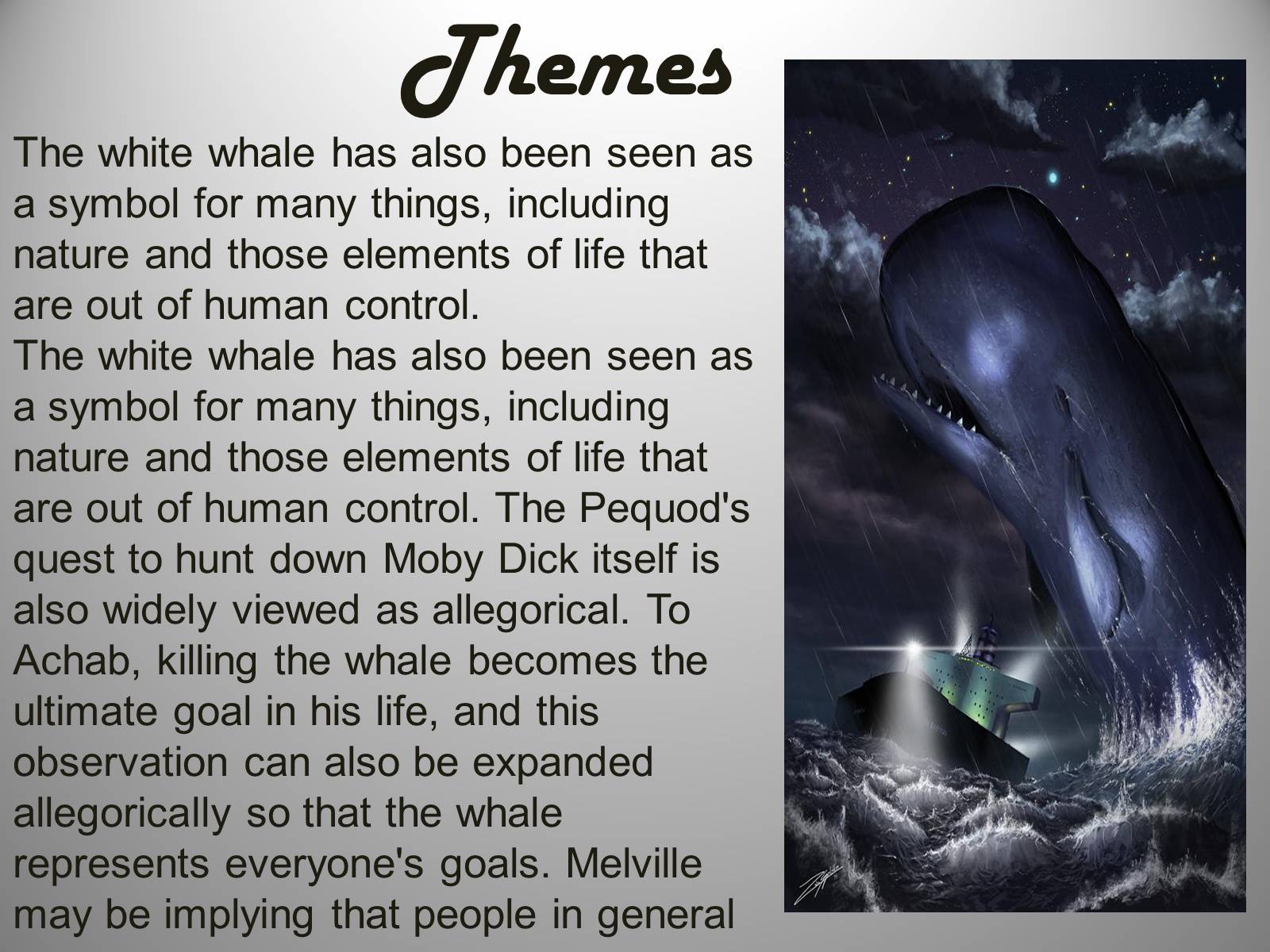
The white whale has also been seen as a symbol for many things, including nature and those elements of life that are out of human control.
The white whale has also been seen as a symbol for many things, including nature and those elements of life that are out of human control. The Pequod's quest to hunt down Moby Dick itself is also widely viewed as allegorical. To Achab, killing the whale becomes the ultimate goal in his life, and this observation can also be expanded allegorically so that the whale represents everyone's goals. Melville may be implying that people in general
Themes
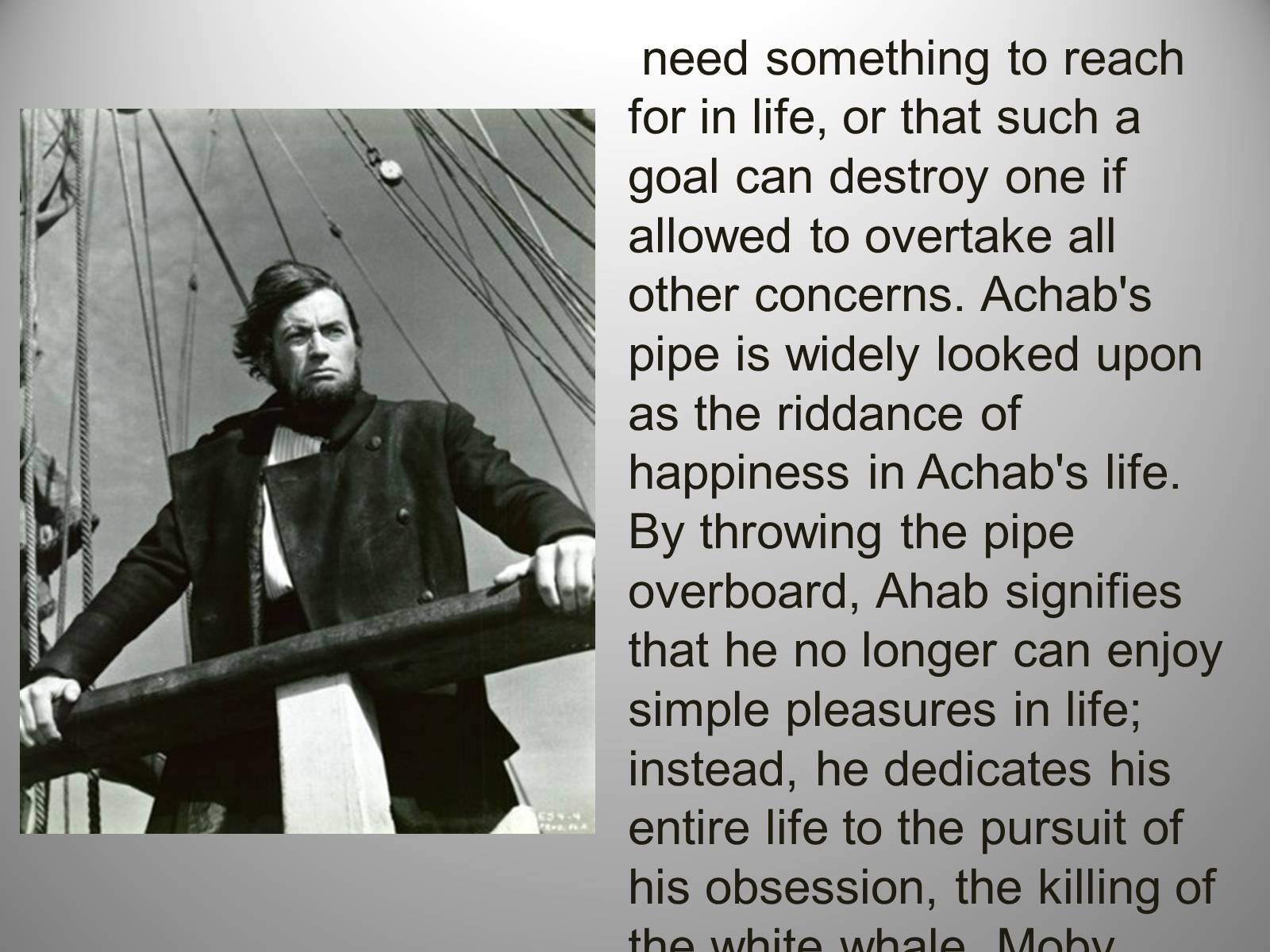
need something to reach for in life, or that such a goal can destroy one if allowed to overtake all other concerns. Achab's pipe is widely looked upon as the riddance of happiness in Achab's life. By throwing the pipe overboard, Ahab signifies that he no longer can enjoy simple pleasures in life; instead, he dedicates his entire life to the pursuit of his obsession, the killing of the white whale, Moby Dick.
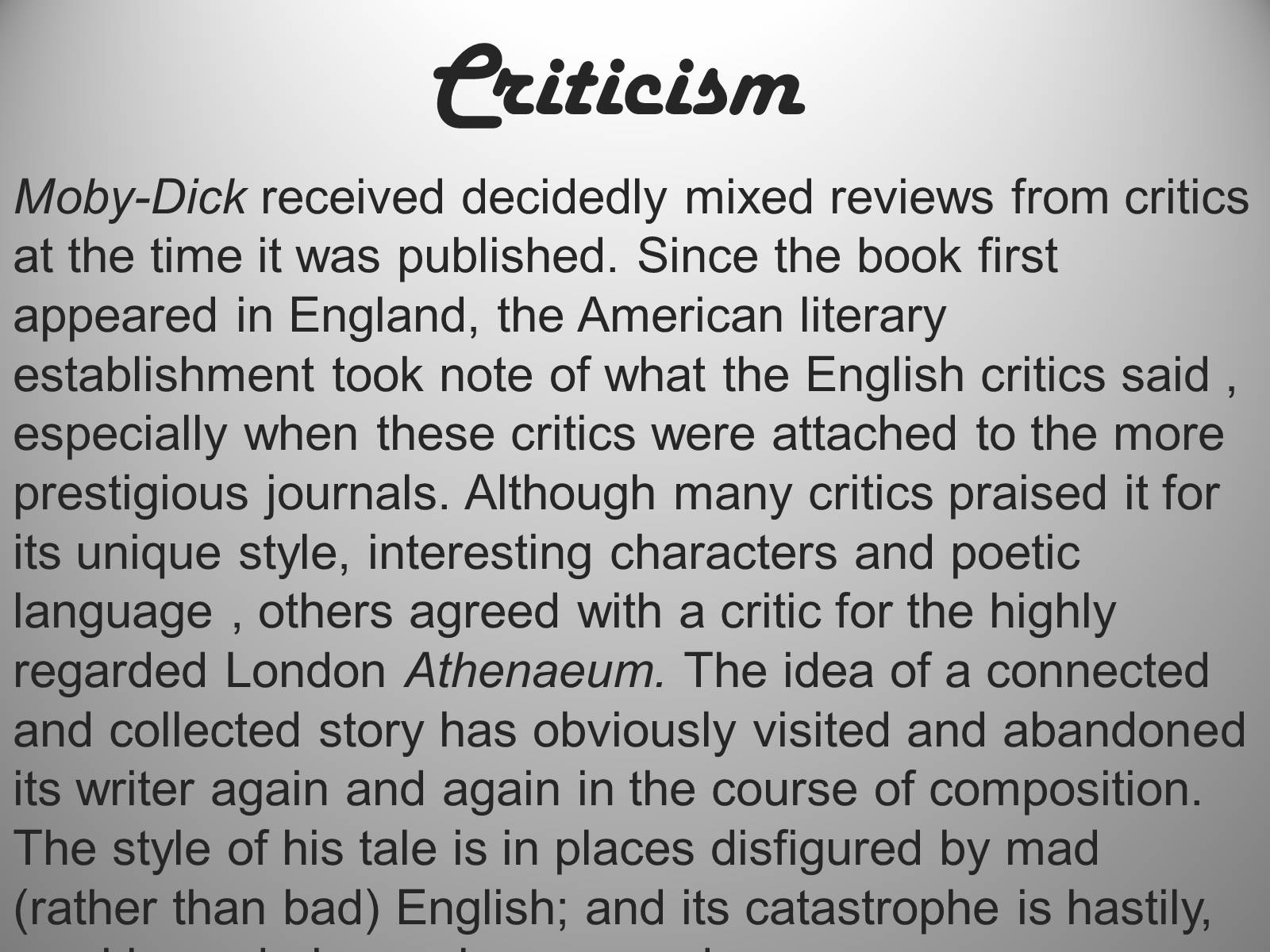
Moby-Dick received decidedly mixed reviews from critics at the time it was published. Since the book first appeared in England, the American literary establishment took note of what the English critics said , especially when these critics were attached to the more prestigious journals. Although many critics praised it for its unique style, interesting characters and poetic language , others agreed with a critic for the highly regarded London Athenaeum. The idea of a connected and collected story has obviously visited and abandoned its writer again and again in the course of composition. The style of his tale is in places disfigured by mad (rather than bad) English; and its catastrophe is hastily, weakly, and obscurely managed.
Criticism
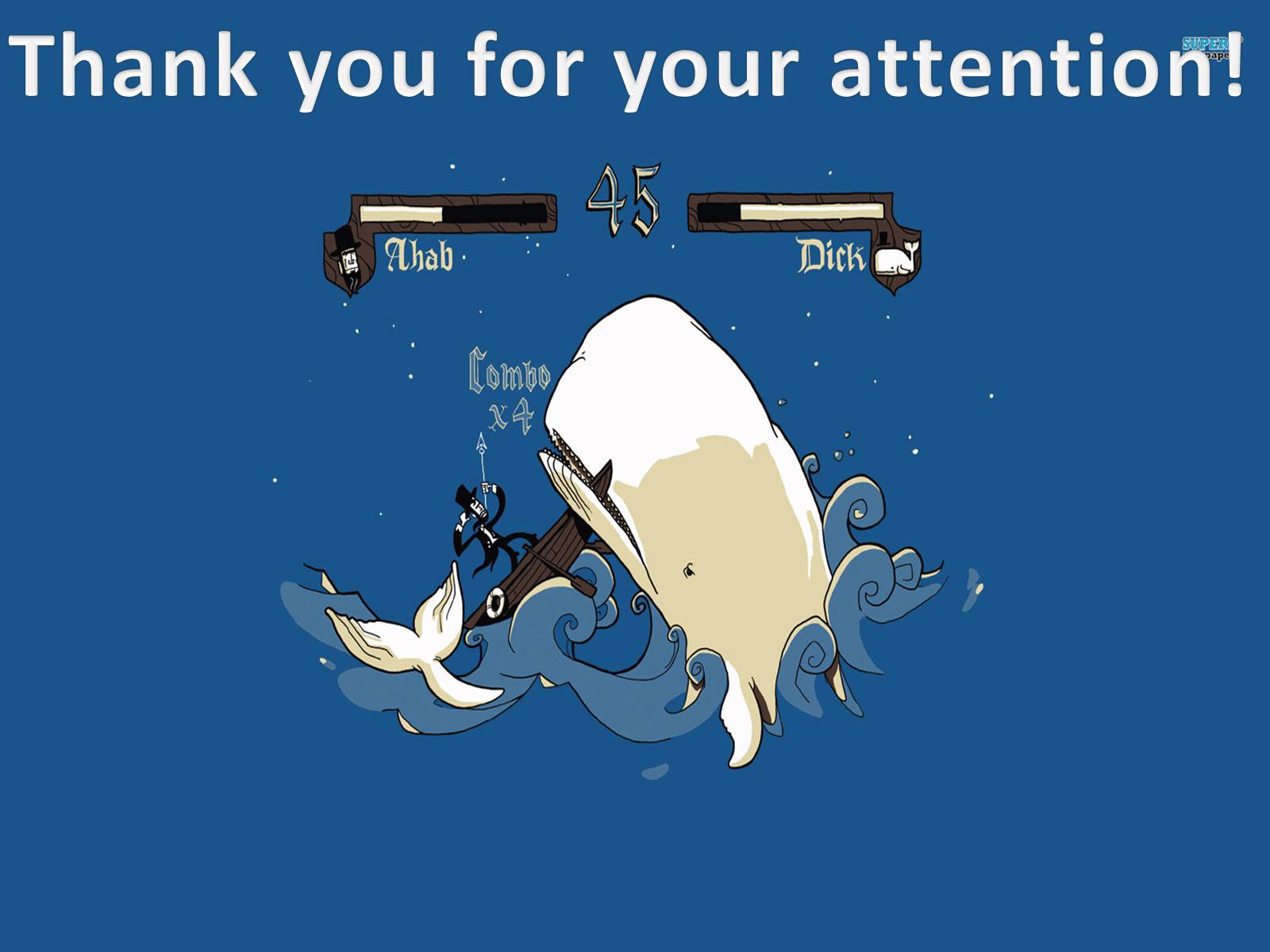
Thank you for your attention!